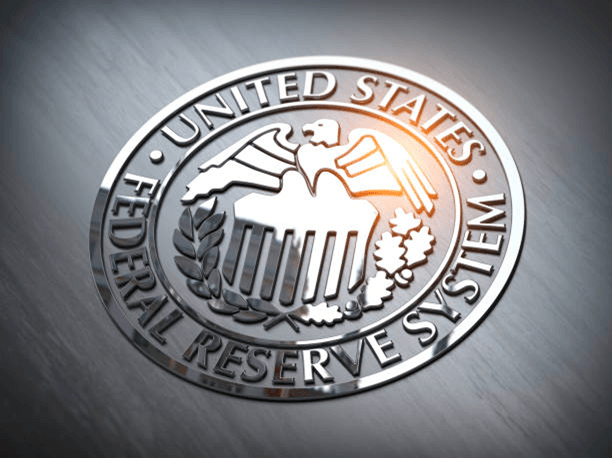

Quantitative tightening (generally referred to as “QT”) can be described as a kind of monetary medicine that decreases liquidity. It’s generally prescribed by central banks to provide relief for such uncomfortable symptoms as hot housing market, rampant inflation, and an unpredictable stock market. To paraphrase a popular Canadian cough remedy ad, it tastes awful, but it can work.
QT has two main tools to achieve its purposes: outright sales of government bonds in the secondary Treasury market, and not buying back the bonds that the Fed holds when they mature.
Both of these strategies are intended to increase the supply of bonds available in the market. The main objective of reducing the amount of money in circulation is to curtail escalating inflationary influences. This process inevitably results in higher interest rates.
When the Federal Reserve decides to sell these bonds or offload its balance sheet, someone must buy them. Usually on the other side of the transactions are banks, which are forgoing their cash in return for these treasuries. Since these treasuries have different maturities, it adds duration risk to the bank and since banks have swapped their reserves by these treasuries, they need to maintain their reserve requirements by reducing credit creation. That means less loans, and less credit. Think of credit as the oxygen for the market, if access to credit gets hard, markets run out of oxygen. If you assume the inflation we are experiencing is like fire, cutting oxygen in the financial markets is the best and fastest way to reduce and contain the fire.
Three of the most obvious signs that quantitative tightening is being effectively applied are rising (“normalized”) interest rates, reduced demand for goods and services, and dramatic drops in the value of stocks and bonds.
The Federal Reserve is not in the habit of implementing QT. In fact, the Fed had spent close to 14 years since the Great Recession of 2008 focusing on its opposite, quantitative easing (QE). With QE, central banks purchase various kinds of securities in order to reduce interest rates, increase the money supply, and encourage lending to businesses and consumers. The goal is to stimulate economic activity and help keep credit flowing.
Near the end of 2021, Fed officials made it clear that the era of loose money was coming to an end. Chair Jerome Powell, under pressure to phase out QE and mortgage-backed security (MBS) purchases, altered his earlier position that inflation was only temporary. The CPI had reached 6.8%, its highest level in 40 years. The time had come to raise interest rates in a hurry. The Fed would stop spending billions of dollars on bonds monthly, as well as allowing the bonds to mature.
Selling bonds pushes down the prices of longer-term securities, raising the yield, because bond prices and yields are inversely related. Higher borrowing rates make it less advantageous to take out loans, which the Fed hopes will lower demand and push down inflation.
In an August 25, 2022 interview with Bloomberg television, Greg Jensen, the co-chief investment officer of hedge fund Bridgewater Associates, predicted that stocks and bonds could fall as much as 25% as the Federal Reserve's tightening cycle isn't being priced in.
“In aggregate, the asset markets will decline from 20% to 25%,” Jensen warned. If his prediction comes to fruition, then investors won't be able to avoid the downturn, he added.
Jensen expects that QT and rate hikes will drive down both inflation and economic growth, and “unfortunately the inflation will be more stubborn,” resulting in higher interest rates across the curve, particularly on the long end.
Asset prices will also fall, he said. “They need to decline,” citing a big disconnect between the financial economy and the real economy. “We’re still 25% to 30% above the normal relationship between cash flows and asset prices.”
Stocks and particularly bonds have already done badly since the beginning of 2022, sliding 13.2% and 22.2%, respectively, amid mounting recession fears, tighter financial conditions, and a significant slowdown in the global economy.
Considering the scale of inflation and for how long prices have run in front of the Fed’s 2% target, many observers were surprised that the Fed nonetheless continued to buy bonds right up to March 2022.
The Fed’s prolonged spending spree had resulted in their balance sheet ballooning from about $4.2 trillion in February 2020 to almost $9 trillion by mid-March 2022.
By way of comparison, The Fed increased its holdings from less than $1 trillion before the Great Recession to almost $4.5 trillion by 2016. The Fed lowered its balance sheet for a period between 2017 through 2019.
The current plan is to reduce the balance sheet by roughly $90 billion per month, compared to the monthly $120 billion in securities purchases that began in June 2020. (This was after adding an astounding $3 trillion in the previous three months.)
How long the tightening will continue is anybody’s guess at this point. Bank of America researchers expect the Fed’s balance sheet to wind up at 34% of U.S. gross domestic product (GDP) by the end of the year, down from 37% the prior year.
Observers at Wells Fargo Securities believe that the Fed will continue to raise interest rates this year, possibly by 0.75 percentage points in September, 0.50 points in November, and then add a final 0.25 in December.
Disclaimer: The content and materials available on this site are not intended to serve as financial, investment, trading, or any other form of advice or recommendation from Trading Terminal.